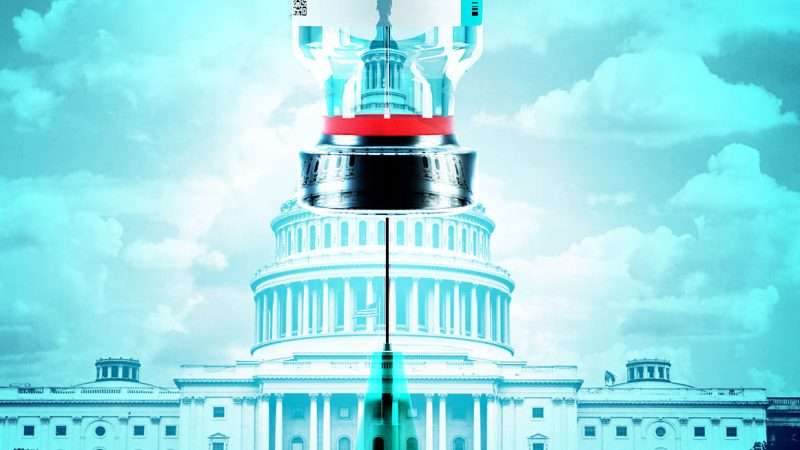
Twitter sues to stop Texas’ top cop from violating the First Amendment. Twitter claims Texas Attorney General Ken Paxton is only investigating the company as payback for it banning former President Donald Trump’s account. “Paxton made clear that he will use the full weight of his office, including his expansive investigatory powers, to retaliate against Twitter for having made editorial decisions with which he disagrees,” Twitter says in its federal lawsuit, filed Monday in the U.S. District Court for the Northern District of California.
Paxton launched the investigation into Twitter and several other tech companies on January 13—just five days after Twitter’s suspension of Trump from its platform—decrying “the seemingly coordinated de-platforming of the President of the United States.”
But private companies are allowed to deplatform public officials as they see fit. The First Amendment doesn’t just protect the right of private individuals and corporations to speak freely without censorship from the government but to resist serving as a mandatory forum for government speech, too.
With the new lawsuit, Twitter “seeks to stop AG Paxton from unlawfully abusing his authority as the highest law-enforcement officer of the State of Texas to intimidate, harass, and target Twitter in retaliation for Twitter’s exercise of its First Amendment rights,” it states. The suit continues:
The rights of free speech and of the press afforded Twitter under the First Amendment of the U.S. Constitution include the right to make decisions about what content to disseminate through its platform. This right specifically includes the discretion to remove or otherwise restrict access to Tweets, profiles, or other content posted to Twitter. AG Paxton may not compel Twitter to publish such content over its objection, and he may not penalize Twitter for exercising its right to exclude such content from its platform.
You can read the whole complaint here.
FREE MINDS
Iowa is cracking down on early voting, as part of Republicans’ ongoing charade that the 2020 election was rife with election fraud. “Republicans said the new rules were needed to guard against voting fraud, though they noted Iowa has no history of election irregularities and that November’s election saw record turnout with no hint of problems in the state,” notes NBC News. More:
The law shortens the early voting period to 20 days from the current 29, just three years after Republicans reduced the period from 40 days. It also requires most mail ballots to be received by Election Day, rather than counting votes postmarked by Election Day that arrive by noon on the Monday following the election.
Georgia yesterday also passed a bill restricting absentee voting:
Breaking news: The Georgia senate approved a bill with sweeping new voting restrictions, including getting rid of no-excuse absentee voting in the state 29-20
— Sam Levine (@srl) March 8, 2021
FREE MARKETS
A new vision for antitrust law. Asheesh Agarwal, deputy general counsel at TechFreedom, lays out some of the popular, problematic, and woefully bipartisan proposals to give the U.S. government more control over private businesses and counters with a “positive antitrust agenda” that draws on existing laws and concepts:
In recent months, antitrust activists have defined the debate with very aggressive proposals that break from the bipartisan consensus of the past 40 years. These ideas, popular in Europe, include: abandoning the venerable consumer welfare standard to encompass amorphous concepts such as “democratic ideals”; calling for structural separation of large companies; and adopting a “guilty until proven innocent” presumption for many common business practices, such as small acquisitions.
Rather than simply oppose these ideas, antitrust traditionalists — people on both sides of the aisle who believe in settled antitrust concepts and have concerns about upending decades of law and practice — should promote their own, alternate agenda. Tim Muris, one of the Federal Trade Commission’s most successful chairmen ever, developed and implemented a “positive antitrust agenda” to show people that established antitrust concepts could address competitive concerns.
More on what a less extreme antitrust agenda might look like here.
QUICK HITS
• Another U.S. sex trafficking “rescue” group turns out to be a bunch of loons:
Operation Underground Railroad is a hugely prominent anti-sex trafficking charity that had deep ties to the Trump admin and is beloved by Q adherents. @annamerlan and I investigated their claims about their overseas missions and found … a lot: https://t.co/02WSg9QqdB
— Tim Marchman (@timmarchman) March 8, 2021
• The Centers for Disease Control and Prevention (CDC) now says that fully vaccinated people can “visit with other fully vaccinated people indoors without wearing masks or physical distancing,” “visit with unvaccinated people from a single household who are at low risk for severe COVID-19 disease indoors without wearing masks or physical distancing,” and “refrain from quarantine and testing following a known exposure if asymptomatic.”
• It looks more and more likely that COVID-19 did originate in Wuhan, China, but not at an open-air market there.
• A record number of migrant children are being held in U.S. detention facilities. “More than 3,200 migrant children were stuck in Border Patrol facilities on Monday, with nearly half held beyond a three-day legal limit,” says CBS News.
• “A Michigan State Police trooper has been charged in an incident in which he set his dog on a driver and kept the biting animal on the man for nearly four minutes even though the driver was pleading for help,” reports NBC News.
from Latest – Reason.com https://ift.tt/3lb27At
via IFTTT

